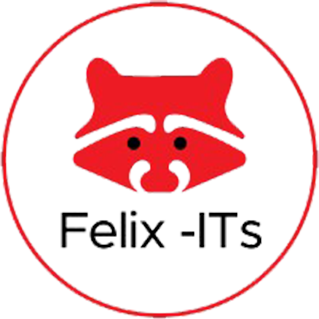Becoming an adept .NET full-stack developer requires the essential perk of going through a flash course before the interview in a very competitive job market. Besides general full-stack developer interview questions, the fact of choosing a good .NET full-stack development course is key to mastering the demanded skills.
At Felix-IT Systems, we offer industry-based .NET training that prepares students with practical knowledge in readiness for real-life experience. This blog aims to address some of the most common interview questions in .NET and provide a guide to the job opportunities in .NET so that you ace your career from learning to landing a job.
Roles and Responsibilities of a .NET Developer
- Application Design and Development: Design scalable applications in .NET Framework to meet business and end-user requirements.
- Integrating the Front-End and Back-End Technologies: Work with other developers in merging UI/UX elements with back-End functionalities perfectly.
- Optimizing Performance of Applications: Ensure that all applications run efficiently, optimizing performance to ensure loading and responsiveness.
- Ensuring Application Security and Code Quality: Build clean, maintainable code, allowing applications to stay on the path of secureness to avoid vulnerabilities.
Top .NET Interview Questions and Expert Answers
What is .NET Framework?
The .NET Framework is a software development platform developed by Microsoft. It provides a controlled environment for the development and execution of applications. Key components include the Common Language Runtime (CLR) and the .NET Framework Class Library.
What is CLR?
The Common Language Runtime (CLR) is the runtime environment in the .NET Framework. It handles memory management, security, and exception handling, and allows the execution of .NET programs.
What is CLS?
The Common Language Specification (CLS) is a set of rules that language compilers must follow to ensure interoperability among .NET languages.
What is CTS?
The Common Type System (CTS) defines all data types and programming constructs supported by the runtime, ensuring that objects written in different .NET languages can interact with each other.
Explain the concept of garbage collection in .NET
Garbage collection in .NET is an automated memory management feature. It automatically releases memory occupied by objects that are no longer in use, reducing memory leaks and enhancing performance.
What is ASP.NET?
ASP.NET is an open-source server-side web application framework designed for web development to produce dynamic web pages. It allows developers to build robust and scalable web applications.
Bonus Read – Best Companies for Full-Stack Developers to Work in Pune
What are the different types of authentication in ASP.NET?
- Forms Authentication
- Windows Authentication
- Passport Authentication
- Custom Authentication
What is MVC in ASP.NET?
MVC stands for Model-View-Controller. It is a design pattern used to separate an application into three main components: Model (data), View (UI), and Controller (business logic).
Explain the ASP.NET page life cycle
The ASP.NET page life cycle includes the following stages: Initialization, Instantiation of controls, Restoration & maintenance of state, Running event handler code, and Rendering.
What is ViewState?
ViewState is a mechanism in ASP.NET to preserve page and control values between round trips. It stores data in a hidden field on the page.
What is C#?
C# is a modern, object-oriented programming language developed by Microsoft. It is designed for building a wide range of applications that run on the .NET Framework.
Explain the difference between “==” and “===” in C#
In C#, “==” is used to compare the values of two operands, while “===” does not exist in C#. (Note: “===” is used in JavaScript for strict comparison.)
What are value types and reference types in C#?
Value types store data directly and include simple types like int, char, etc. Reference types store references to the actual data and include objects, arrays, and strings.
What is a delegate in C#?
A delegate is a type that represents references to methods with a specific parameter list and return type. It is used to pass methods as arguments to other methods.
What is LINQ?
LINQ (Language Integrated Query) is a feature in C# that provides query capabilities directly in the language syntax to work with data collections.
What is Entity Framework?
Entity Framework (EF) is an ORM (Object-Relational Mapping) framework that allows developers to work with relational data using domain-specific objects.
What are the advantages of using Entity Framework?
- Simplifies data access
- Provides a strongly typed data model
- Supports LINQ for queries
- Abstracts database-specific details
What is the Code-First approach in Entity Framework?
In the Code-First approach, you define your model classes first and then create the database schema based on these classes.
What is the DbContext class in Entity Framework?
DbContext is a class in EF that represents a session with the database and allows querying and saving data.
What are migrations in Entity Framework?
Migrations are a way to update the database schema incrementally as the data model evolves.
What is ADO.NET?
ADO.NET is a set of classes in the .NET Framework that provides data access services to .NET applications. It is used for connecting to databases, retrieving data, and performing CRUD operations.
What is a DataSet in ADO.NET?
DataSet is an in-memory representation of data that can contain multiple DataTable objects. It is used for managing disconnected data.
What are the main components of ADO.NET?
- Connection
- Command
- DataReader
- DataAdapter
What is the difference between DataReader and DataSet?
DataReader provides a forward-only, read-only stream of data from a database. DataSet is an in-memory representation of data that can hold multiple tables.
What is a connection string?
A connection string is a string that specifies information about a data source and how to connect to it.
What are Web Services in .NET?
Web Services are software components that allow applications to communicate over the web using standard protocols such as HTTP, XML, and SOAP.
What is WCF?
Windows Communication Foundation (WCF) is a framework for building service-oriented applications. It enables communication between applications via messages.
What is RESTful Web Service?
RESTful Web Services use HTTP requests to perform CRUD operations. They are based on REST architecture, which is stateless and leverages standard HTTP methods.
What is SOAP?
SOAP (Simple Object Access Protocol) is a protocol for exchanging structured information in web services using XML.
What is the difference between WCF and Web API?
WCF is used for building service-oriented applications and supports various protocols. Web API is specifically designed for HTTP-based services and is ideal for building RESTful services.
What is .NET Core?
NET Core is a cross-platform, open-source framework for building modern, cloud-based, and internet-connected applications.
What is the difference between .NET Framework and .NET Core?
NET Framework is Windows-only, while .NET Core is cross-platform. .NET Core has a modular design, improved performance, and supports modern application development.
What is Kestrel?
Kestrel is a cross-platform web server for ASP.NET Core. It is lightweight and built for high performance.
What are the benefits of .NET Core?
- Cross-platform
- High performance
- Modular architecture
- Open-source
- Unified development model
What is Middleware in ASP.NET Core?
Middleware is software that’s assembled into an application pipeline to handle requests and responses. Each middleware component can handle a request, pass it to the next component, or modify the response.
What is dependency injection?
Dependency injection is a design pattern used to implement IoC (Inversion of Control). It allows the creation of dependent objects outside of a class and provides those objects to the class.
What is asynchronous programming in .NET?
Asynchronous programming allows the execution of tasks in a non-blocking way using the async and await keywords. It improves application responsiveness.
What is NuGet?
NuGet is a package manager for .NET. It allows developers to create, share, and consume reusable components.
Additional Read – Mastering Full Stack Development: Essential Skills for Freshers
What is SignalR?
SignalR is a library for ASP.NET that adds real-time web functionality to applications. It allows server-side code to send asynchronous notifications to client-side web applications.
What is the Global Assembly Cache (GAC)?
The GAC is a machine-wide code cache that stores .NET assemblies specifically designated to be shared by several applications.
What is microservices architecture?
Microservices architecture is a design pattern in which a single application is composed of many loosely coupled and independently deployable smaller services.
What is Docker, and how does it relate to .NET Core?
Docker is a platform for developing, shipping, and running applications in containers. .NET Core applications can run in Docker containers, providing consistency across environments.
What are design patterns?
Design patterns are reusable solutions to common software design problems. Examples include Singleton, Factory, and Observer patterns.
What is a Singleton pattern?
The Singleton pattern ensures a class has only one instance and provides a global point of access to it.
What is CQRS?
CQRS (Command Query Responsibility Segregation) is a pattern that separates read and write operations into different models to optimize performance, scalability, and security.
How do you handle exceptions in .NET?
Exceptions are handled using try-catch-finally blocks. The try block contains code that may throw exceptions, catch handles exceptions, and finally execute code regardless of whether an exception occurred.
What is unit testing?
Unit testing involves testing individual components or units of code to ensure they work as expected. Popular frameworks for .NET include MSTest, NUnit, and xUnit.
What is logging, and why is it important?
Logging is the process of recording information about an application’s execution. It’s crucial for debugging, monitoring, and diagnosing issues in production environments.
What are async and await in C#?
async and await are keywords used in C# to write asynchronous code. async marks a method as asynchronous, and await pauses the execution of the method until the awaited task is completed.
What is the purpose of the using statement in C#?
The using statement ensures that IDisposable objects, such as file streams and database connections, are properly disposed of once they are no longer needed, preventing resource leaks.
Job Opportunities in .NET
Career opportunities for .NET developers span various sectors, like finance, healthcare, e-commerce, and technical start-ups. Highly sought-after roles educated at length in the .NET Field are .NET Software Developer, .NET Full Stack Developer, and .NET Solutions Architect, providing expansive possibilities strategically leading toward advancement and specializations.
In acceptance of all the advances in education and training, career opportunities of .NET are powerful, providing a promising job prospect.
Final Thoughts
A Full Stack with .NET course is an excellent pathway to becoming a developer due to the high demand for these skills in the industry. Felix IT Systems offers the best full stack with a .NET course, providing an industry-aligned learning experience. Our comprehensive curriculum covers both front-end and back-end development, ensuring you gain expertise in building complete web applications. With experienced instructors and hands-on projects, Felix IT Systems prepares you for a successful career as a full-stack developer.
Enroll now to enhance your skills and meet the industry’s growing need for skilled developers.


